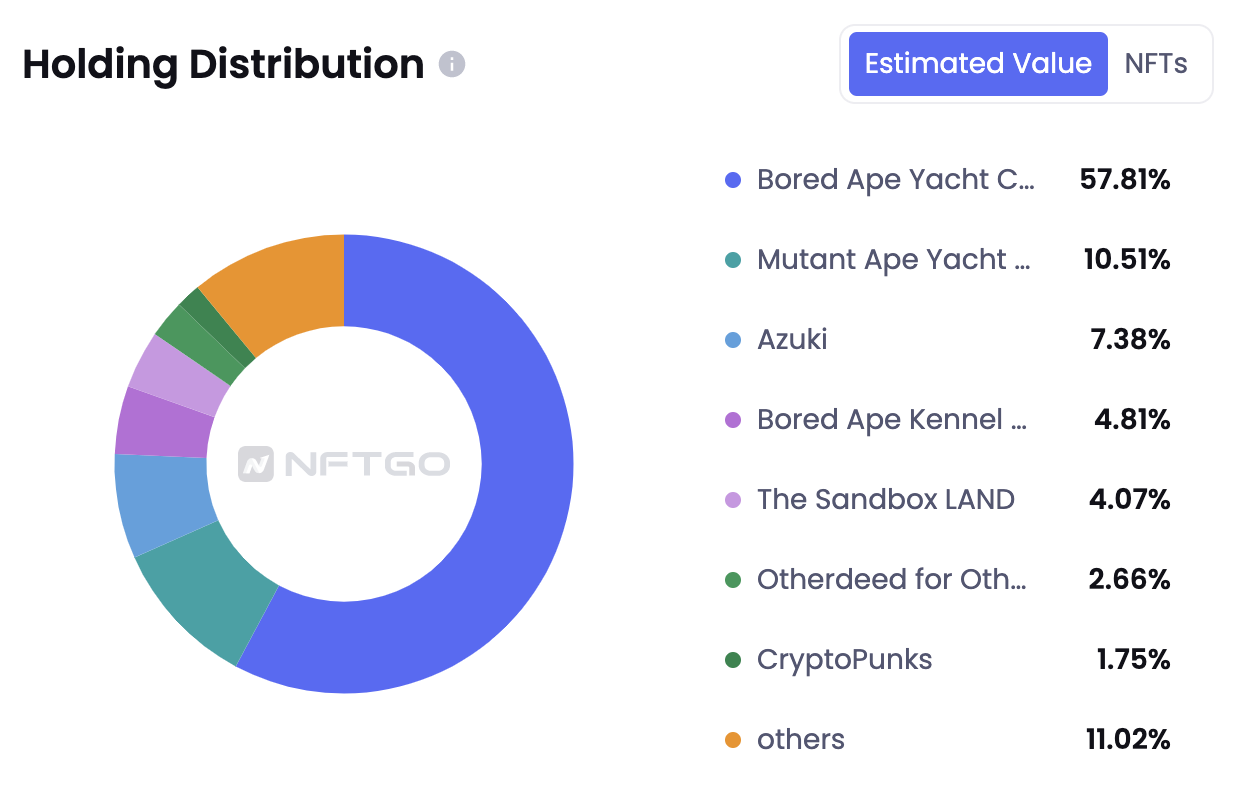How to Track & Manage Your NFT Portfolio?
For every NFT investor/trader, it is important for one to be able to keep track of their NFT portfolio. With the existing platforms, a lot of them offer users the feature of viewing their NFTs all in 1 place. However, portfolio management goes beyond that and there are multiple aspects that a user should be concerned about. Examples are the overall profit, portfolio allocation and the ability to manage the NFTs within the portfolio.
Here are some key features that are available on NFTGo.
1. Portfolio Value
The portfolio value is an estimation of the total value of the user's NFT portfolio. The dashboard depicts the changes in the estimated value over a period of time. This allows users to track their portfolio value, and observe if there are any significant fluctuations. If users notice that their estimated portfolio value has increased significantly, they can look into their NFTs to determine if they would like to take profit. Vice versa, should the estimated portfolio value have decreased, users will have to think about whether they would like to cut loss on the NFT, or they are confident that the collection will increase its floor price again in the future. If that's the case, they can choose to continue holding onto the NFT.

2. Profit & Loss
Calculating a NFT portfolio profit and loss manually is very tedious and often inaccurate, as users have to consider the gas fees, royalty fees, platform fees and the fluctuating prices of the NFT. With NFTGo, the profit and loss of a user's portfolio is automatically calculated. This is a dynamic number that comprises of both realized and unrealized profits.
Similarly, this feature highlights the changes in profit and loss of the portfolio over a period of 7 days and 30 days. Should users realize that this number has been increasing despite them not having made any sales, it is an indicator that some of the NFTs within the portfolio are becoming increasingly profitable, and users can choose whether they would like to sell these NFTs to realize the profits.

3. Holding Distribution
This feature has been introduced to allow for better overview of the portfolio distribution. This is achieved through a pie chart that displays the weighted distribution of the NFTs, with a few different metrics
- Estimated Value
- Value
- NFTs
Given that the trends in the NFT market changes over time, this will be a good tool for users to track how they would like to change their portfolio allocation. If a particular trend has been going on and the market cap of that NFT category has been constantly increasing, users can take a look to see whether they have good exposure to this category to leverage on the rise in value. Should they identify that they do not have much NFTs within that category, they can consider buying into such NFT categories.

Updated 7 months ago
